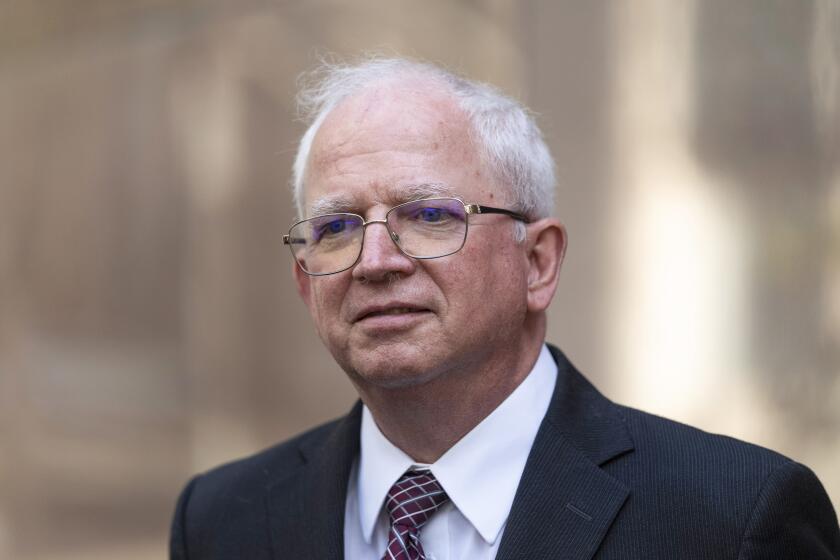Homeless Encampment Folds for the Winter
The moving truck backed into what was left of Sanctuary City, ready to be filled with suitcases and trash bags overflowing with clothing, blankets and whatever else the homeless can’t carry with them for the winter.
The tents that had been their homes for five months were broken down and thrown in the trash. A bicycle with a bent frame sat unclaimed, next to a collection of chairs with broken arms and backs.
“It’s all over,” said Julius Robinson, 57, who had been living for several months in Sanctuary City -- the name given to a patch of dirt at School and Temple streets where as many as 400 homeless people at some point found shelter in the 50 or so nylon tents pitched there.
From the middle of June to early November, Sanctuary City was a refuge from the streets and Worthington House, Springfield’s main state-funded shelter that many complain is overcrowded and dangerous.
The encampment, about a 15-minute walk from City Hall, went up on a lot owned by the Open Pantry social service agency. People policed themselves under rules that prohibited drugs and violence. It also fostered a sense of community where the homeless encouraged each other to stay sober, find work and make it through difficult times.
But the cold has forced almost everyone inside.
Winter is the most difficult and dangerous time for the homeless. Although rising temperatures during a New England summer or in warmer parts of the country can lead to heat exposure and dehydration, the highest death rates among the homeless are recorded in northern states between December and March, advocates say.
Last year, at least 2,000 homeless people died nationwide because of natural causes, hypothermia, murder or suicide, said Michael Stoops, a community organizer for the National Coalition for the Homeless.
Some who lived at Sanctuary City found an early escape from the cold by landing jobs and apartments. Others are in a temporary shelter called the “warming place,” which they say is more tolerable than Worthington House. But for many, the disbursement is just one more hassle that comes with the rootlessness of their lives.
“We’re still homeless,” Robinson said.
Advocates say affordable housing is the best way to curb the kind of chronic homelessness that results in people living on the streets or in the types of tent encampments that have periodically sprung up in cities from Florida to California.
Congress is considering a bill allocating $70 million to states trying to start affordable housing programs for the homeless.
“The answer isn’t about spending more money on shelters,” said Philip Mangano, executive director of the U.S. Interagency Council on Homelessness. “It’s about rehousing the homeless.”
Meanwhile, those without a place of their own must rely on shelters or their own resources to escape harsh weather. They filter into places like Christ Church Cathedral, where at 6 one evening, the smell of disinfectant was drying off the floor.
What had been a soup kitchen dining room an hour before was being converted into a bedroom that could accommodate up to 75 people.
Bob Plaine started covering the mopped floor with mattresses -- thin, mushy mats coated with vinyl that can be easily washed to prevent the spread of infectious diseases.
“When you volunteer here, you get some perks,” Plaine said as he threw a mattress for himself alongside a wall. The spot assured that he wouldn’t have anyone sleeping on at least one side of him. “That’s prime real estate,” he said.
Plaine, 44, spent five months at Sanctuary City. He started sleeping at the church a few weeks ago, when it opened for the winter season.
He feels safer in the temporary shelter than at Worthington House, where some have said they’ve been robbed, threatened or beaten. But like Worthington House, the “warming place” closes in the morning, leaving many of the homeless with no real place to spend the day.
“Many of us fill the afternoon going to a caseworker or going to a doctor or trying to get some kind of services from an agency,” Plaine said. “Or sometimes, you’re saving one of your buddies by dragging him to a detox center.”
The nomadic lifestyle accompanying homelessness, combined with high rates of substance abuse and mental illness that many suffer from, often leads to other problems. Jails and courts fill up with those caught committing petty crimes, and emergency rooms are overwhelmed by those with no other place to turn for even basic medical care, advocates say.
“Life for the homeless is brutish and short,” said John Lozier, executive director of National Health Care for the Homeless. “Homelessness shortens their life span by as much as 20 years.”
Sanctuary City offered a reprieve from some worries, even if many tents leaked despite the patches of duct tape and the blue tarps that covered them. People tried making their places as comfortable as possible. One woman laid out a roll of carpeting. Others hung wind chimes and flags over their doorways.
A common area -- complete with a small camp stove, tables and chairs -- served as a place to cook, eat and visit with social service workers, friends and the people who regularly dropped off food, blankets and clothing.
“We did what people never thought homeless people could do,” Plaine said. “We formed our own community and took care of it.”
But with their little city dismantled, they must carry everything they have and deal with seemingly petty problems, such as storage. Open Pantry paid for a truck to haul bundles of clothing and other belongings to a storage facility that the agency is renting temporarily. When the agency stops paying, individuals will either have to pay for the storage themselves or risk having their possessions thrown out.
“I’ve been hiding my stuff in the woods and around town,” Kevin Lynch, 45, said days before his tent came down.
Many of the homeless talk about Sanctuary City as both a place to live and a sign of social action. Being so visible to the public increases awareness, they figure.
And once it’s warm enough to safely live outdoors, some believe that Sanctuary City may be back.
“It’s a protest. It sends a message,” Plaine said. “People need to realize that the homeless problem isn’t just going to be swept away and disappear if they don’t see our tents anymore.”
More to Read
Start your day right
Sign up for Essential California for news, features and recommendations from the L.A. Times and beyond in your inbox six days a week.
You may occasionally receive promotional content from the Los Angeles Times.






